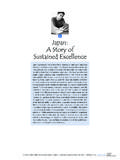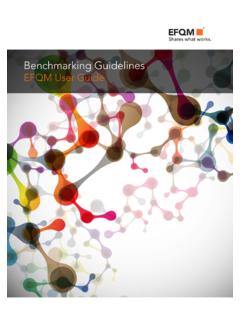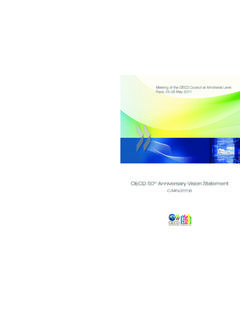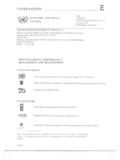Transcription of Planning, Monitoring, and Evaluation - World Bank
1 Method planning , monitoring , and Evaluation : Methods and Tools for Poverty and Inequality Reduction Programs Poverty Reduction and Economic Management Unit Poverty Reduction and Equity Unit Gita Busjeet Acknowledgements This toolkit has been led by Gita Busjeet with comments from Keith Mackay (Consultant, PRMPR), Philipp Krause ( Consultant, PRMPR), Helena Hwang (Consultant, PRMPR), Bertha Briceno ( Senor monitoring and Evaluation Specialist, The World Bank), Indu John-Abraham (Operations Officer, LACPRMPR), and participants at the workshop on evidence based policy organized by the Independent Evaluation Group. This work was carried out under the guidance of Gladys Lopez Acevedo (PRMPR). We would also like to thank Michael Alwan for editorial assistance. Vice President Otaviano Canuto Sector Director Jaime Saavedra Sector Manager Jaime Saavedra Task Manager Gladys L pez-Acevedo 2. Table of Contents Introduction.
2 3. Ex Ante Distributional 7. Poverty and Social Impact Analysis World Bank .. 10. Ex Ante Poverty Impact Assessment Organisation for Economic Co-operation and Development .. 11. Ex Ante Cost Benefit ..12. Agribusiness International Finance Corporation .. 15. Causality Frameworks ..17. The Matrix of Indicators Mexico .. 20. System Dynamics Bangladesh .. 21. Benchmarking ..22. International Benchmarking Network for Water and Sanitation Utilities .. 24. The Public Sector Benchmarking Body Ireland .. 25. Process Evaluations ..27. Process Evaluation Mexico .. 29. Process and Implementation Analysis of the Welfare-to-Work Grants Program United States .. 31. Impact Evaluations ..33. Rural Education Madagascar .. 36. Small and Medium Enterprises Mexico .. 38. Executive Evaluations ..39. Avalia o Executiva dos Projetos Estruturadores Minas Gerais, Brazil .. 42. Evaluaci n Ejecutiva Department of planning Colombia.
3 43. Indicator Evaluations ..45. Avalia o Executiva dos Indicadores Minas Gerais, Brazil .. 47. Evaluaci n de Programas Gubernamentales Chile .. 50. Evaluation Assessment ..50. Randomized Control Trials Checklist Coalition for Evidence-Based Policy .. 53. Evaluation Report Standards and Rating Tool United Nations Fund for Children .. 55. 3. Introduction As we enter the second decade of the twenty-first century, governments, international organizations, nongovernmental organizations (NGOs), philanthropic organizations, and civil society groups worldwide are actively focusing on evidence-based policy and increased accountability to stakeholders (Results Agenda1).The widespread implementation of the Results Agenda has generated a plethora of books, guides, academic papers, trainings, and case studies, which has enabled an ongoing maturation process in the field. Consequently, specialists are now better equipped to understand what works under which circumstances.
4 Broadly speaking there are two interrelated questions which must be answered when assessing the sustainability of a government Results Agenda. First, is the institutional design and practice of government conducive to evidence-based policy making? Second, are the overarching monitoring and Evaluation (M&E). methods and specific tools used appropriate for garnering the evidence demanded by government? These series of notes aim to make a small contribution to the latter question by summarizing and highlighting a selection of PM&E methods and the tools that governments and international organizations around the World have developed to put these into practice in their own The central goal of this initiative is to prompt a process of learning, reflection and action by providing practical information to those whose leadership role requires them to understand PM&E methods and their potential for enhancing evidence- based policy making.
5 Viewed using the technocratic framework of the program cycle, public servants involved with program design and planning , implementation management, and follow-up are continuously faced with decisions and judgments. The Results Agenda aims to ensure that these decisions and judgments are made based on concrete evidence of actual conditions. The tools showcased in this series show how each PM&E method has proved useful in providing that evidence and helped to integrate M&E into the program cycle. The question we would like to emphasize is To what extent is this PM&E method suitable for my needs? Each methodology has strengths and weaknesses given a specific context. For example: What type of program are we focusing on? What are the needs of the public sector in terms of results information? What are the resources, data, and time restraints? Table one highlights some of the issues that have arisen when determining if a specific M&E method highlighted here is suitable for a given context.
6 Figure One: Program Cycle Figure Two: Suitability Design Implementation planning Follow-Up 1. In this document we use the overarching term Results Agenda to describe these connected movements 2. An extensive literature considering the issues surrounding public sector adoption of the results agenda and institutionalization of M&E systems exists. In this context an informative publication is Mackay, K., 2007, How to Build M&E Systems to Support Better Government, World Bank, Washington, DC. 4. Table One: Issues when Determining Suitability Questions Methods Comments This method is in particular useful for new or redesigned programs with lacking or limited investigation of target populations and other stakeholders. In spite of its upfront costs, investment in this method can be very cost effective in the long run, If this policy is implemented Ex Ante allowing for the adjustment and refinement of programs before implementation, who will be the winners and Distributional because programs are likely to be better targeted as a result.
7 Distributional losers? Analysis analysis can also provide invaluable information about the political consequences of new programs. This method is most often used for investment programs where benefits and costs can be easily expressed as a monetary value, such as in infrastructure or From a welfare perspective, agricultural projects. However there have been many innovations in cost-benefit given limited public Cost-Benefit analysis to address this issue. Cost-benefit analysis relies heavily on assumptions Design and planning resources, should we invest in Analysis and forecasting; it may thus be less suitable for programs planned to be operating this program? in unstable environments. This method is suitable for all programs; the development of a good causality framework is a vital foundation for good program design and M&E. The process What results do we wish to underlying the development of the causality framework is important and often Causality achieve and how do we plan involves multiple stakeholders in discussions and training of program staff if they Frameworks to achieve them?
8 Are not familiar with the method. Therefore developing good causality frameworks can be time and labor intensive. This method is suitable for programs that rely on performance indicators to guide management decisions. It is often used by higher-level policymakers to identify Who can provide lessons to well and poorly performing programs that are suitable for comparison. improve the program Benchmarking Benchmarking supports the adoption of realistic and challenging targets in throughout the program programs. It can be difficult to find appropriate benchmarks because of data cycle? constraints or lack of cooperation from affected programs. This method is important to inform decision making at both the implementation and follow up stages of the policy cycle. Without accepted standards of quality and Have operational mechanisms its necessary contextual nature (operations vary in each locale) implementing this Process supported the achievement of method can involve high costs in developing an appropriate design and ensuring Evaluations program objectives?
9 Quality. Process evaluations tend to be very affordable once quality is ensured and can provide excellent value-for-money information. This method is suitable in the context of larger Evaluation initiatives, driven by central agencies, such as the office of budgeting or the planning department, when Implementation and Follow-up Has the program performed these for example have a desire (i) to complement other more focused and in Executive depth evaluations used in government with a rapid Evaluation method and (ii). from a comprehensive Evaluations provide overall performance information to stakeholders other than those directly perspective? involved in a program such as budget offices, congress, and the public. This method is known to produce very reliable statistical results and has been instrumental in transferring knowledge internationally. Issues have been Has participation in the considerations of the ethical and political consequences of using randomized trials.
10 Impact Budget constraints are also a limitation to the use of this method because these program resulted in planned Evaluations evaluations require a significant time and resource investment. As such the impacts on target groups? method is most suitable for larger programs with high coverage. These methods can be very cost effective, helping in particular to enhance M&E. Assessment of capacity in organizations and ensure sustainability of M&E initiatives. A barrier to Is the information from M&E Indicators & the use of these methods is that in the context of limited budgets there is often reliable for decision making? Assessment of little money left for M&E quality control after evaluations have been completed. Evaluations The perspective of the policy cycle remains one of the most useful vehicles for communication and learning today. That said it is also important that we put individual PM&E methods in context of an M&E systems approach.
















